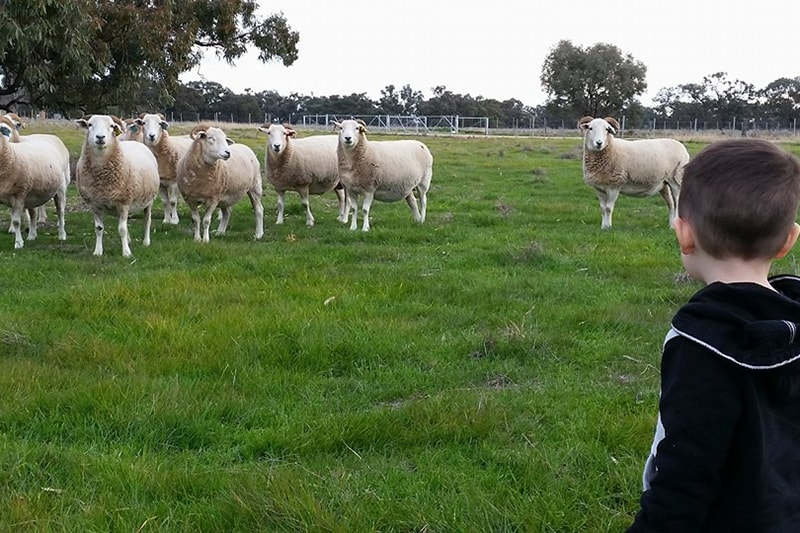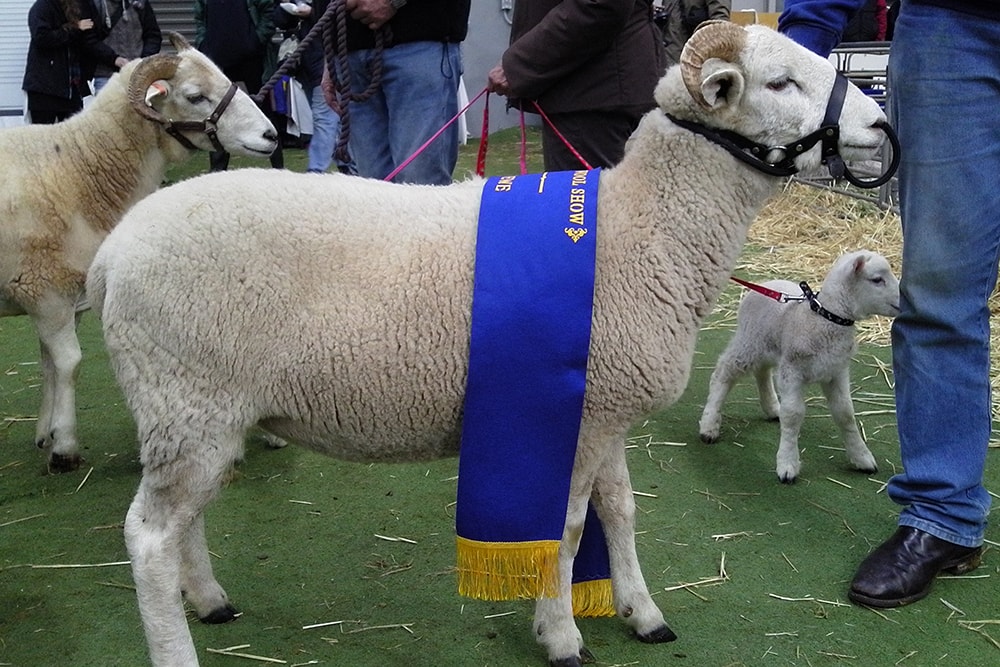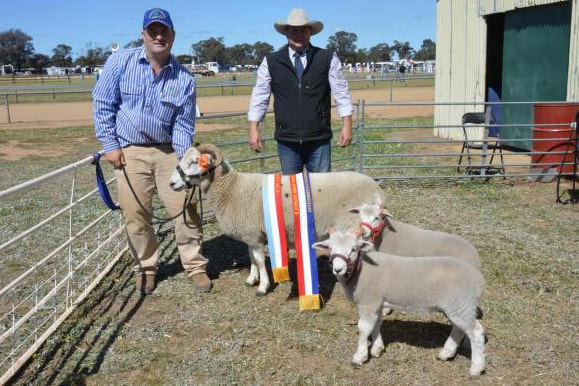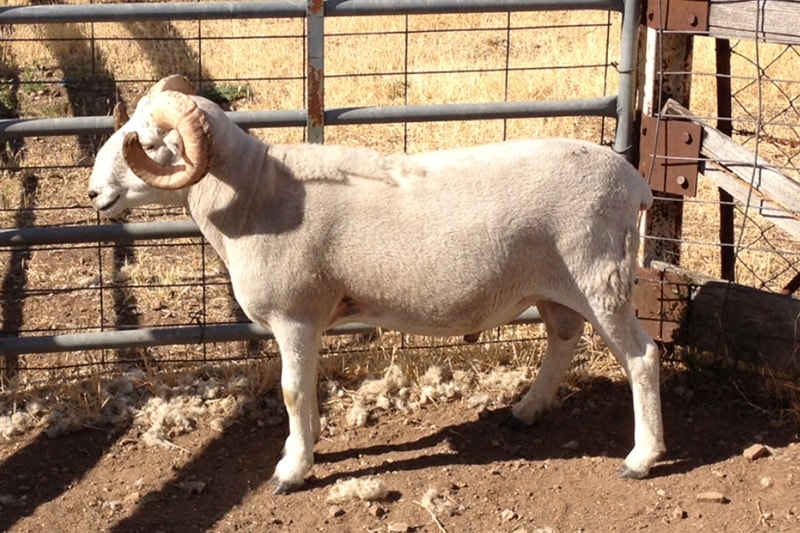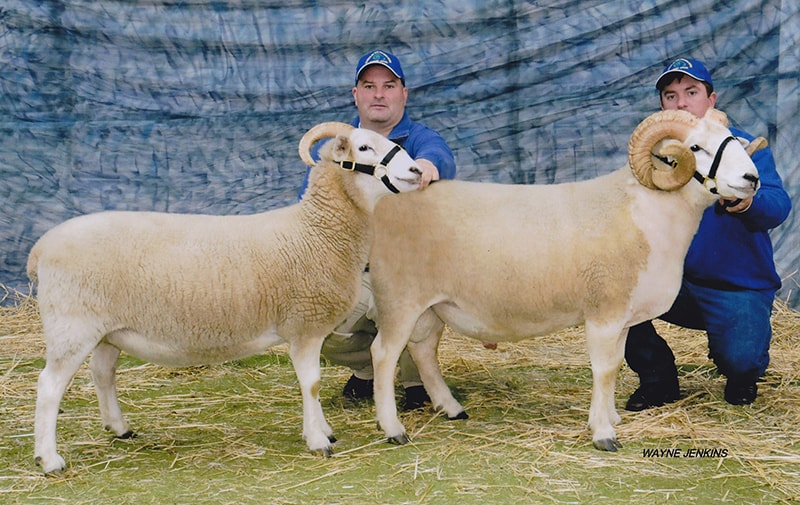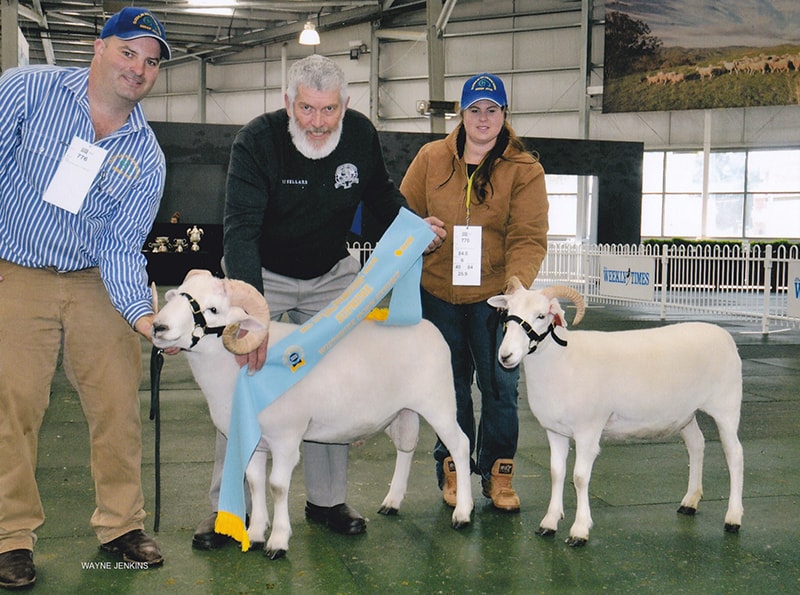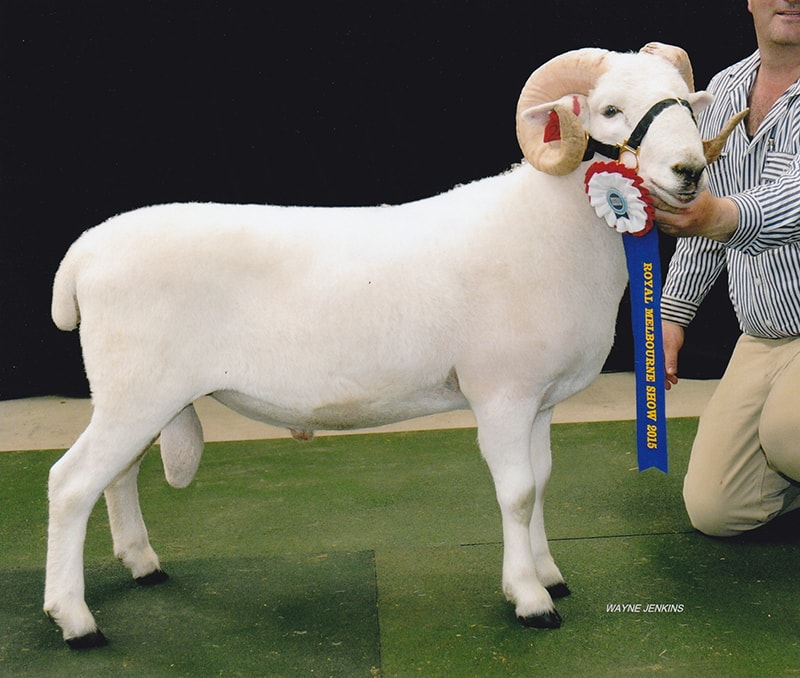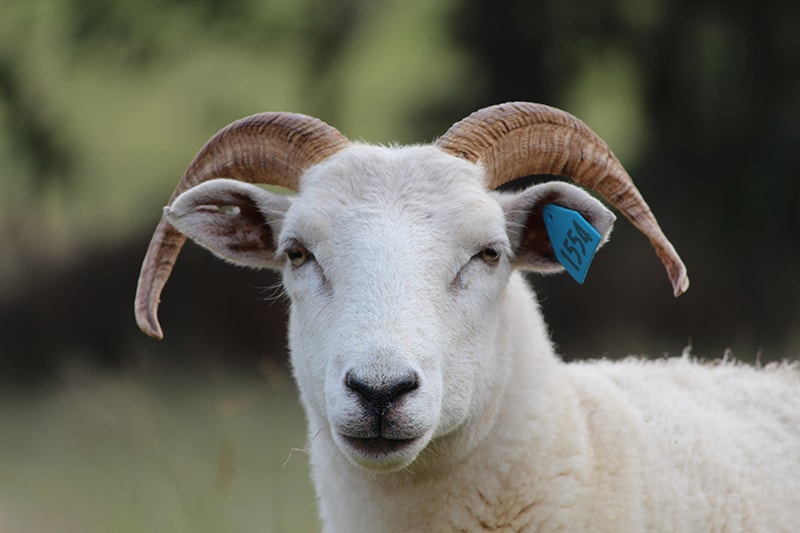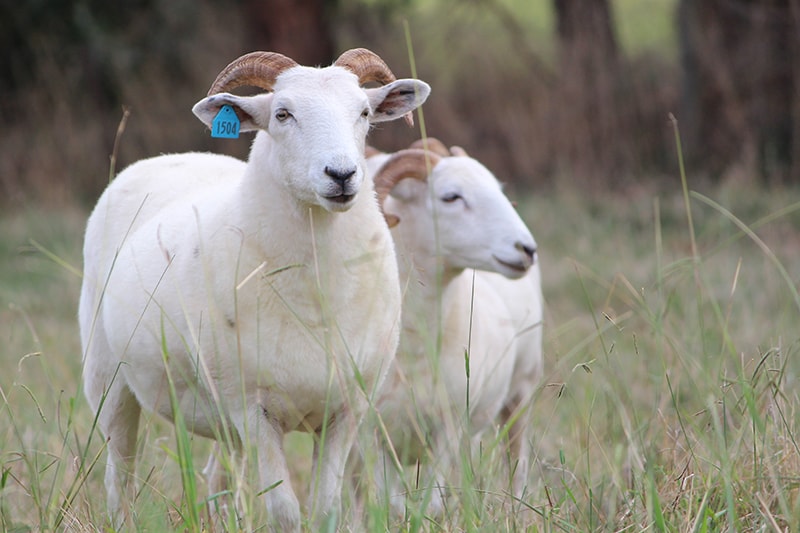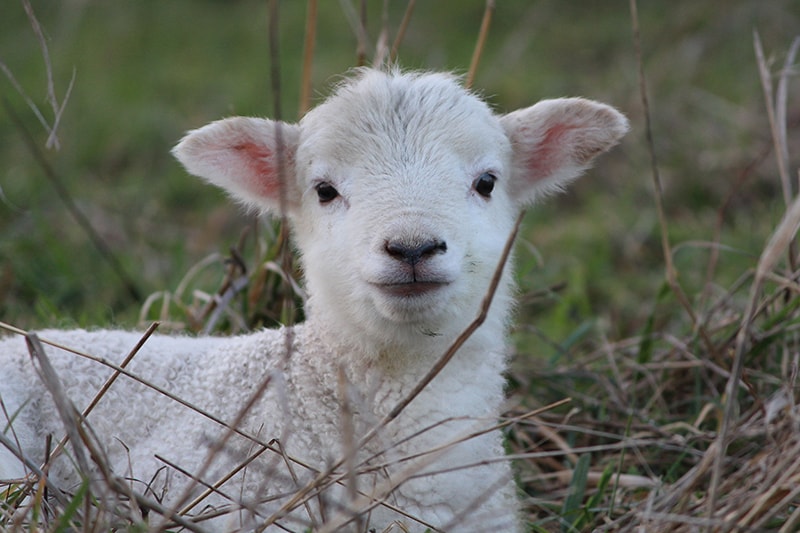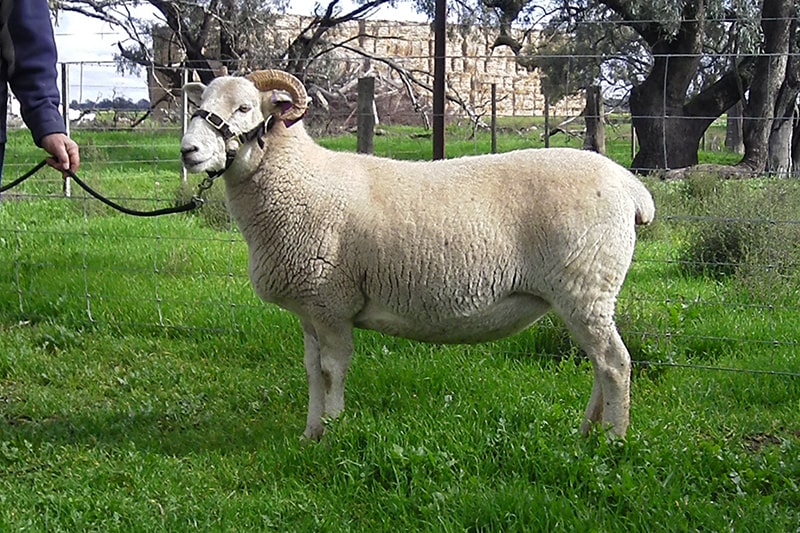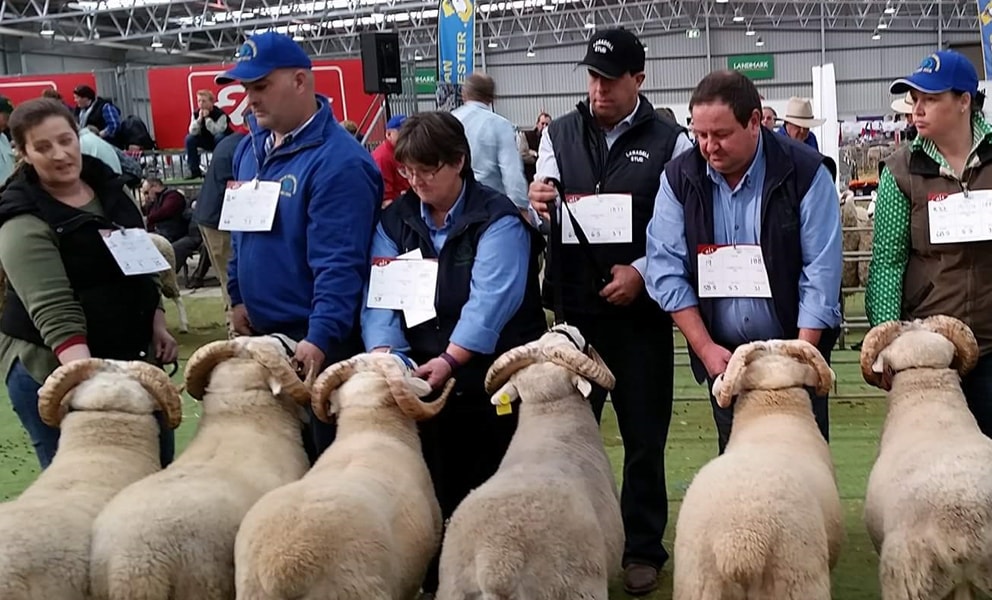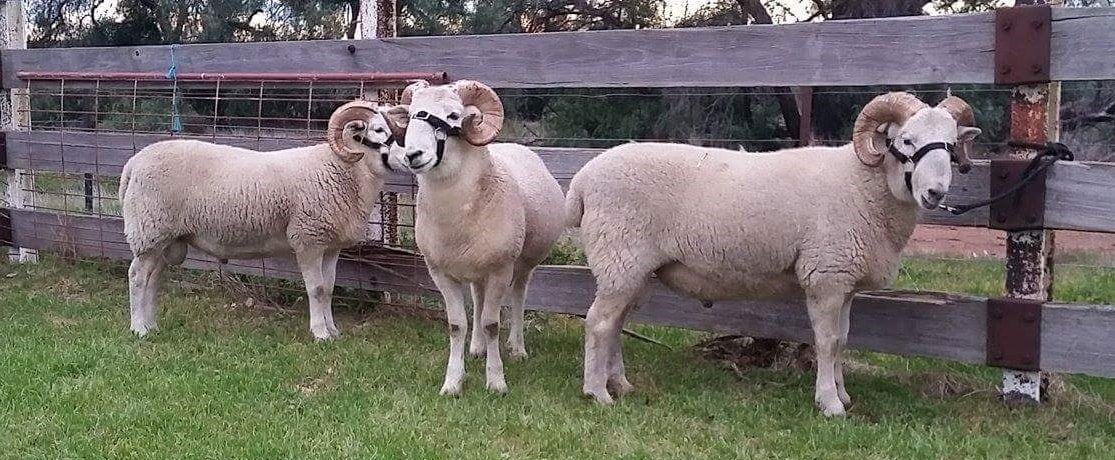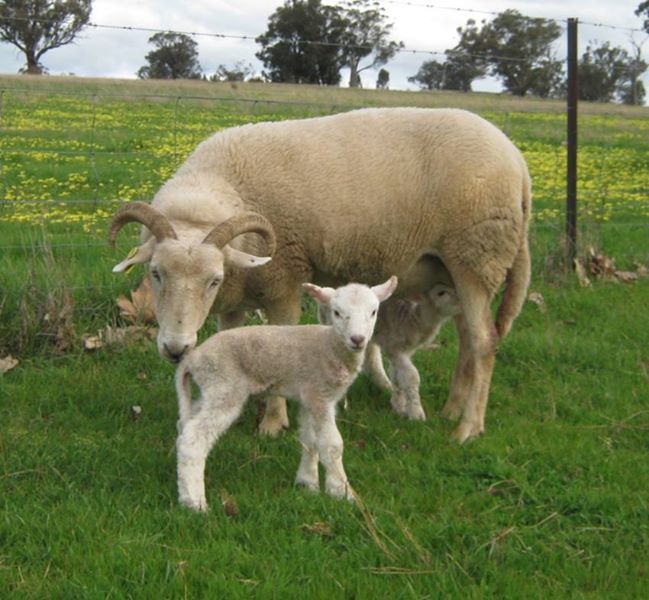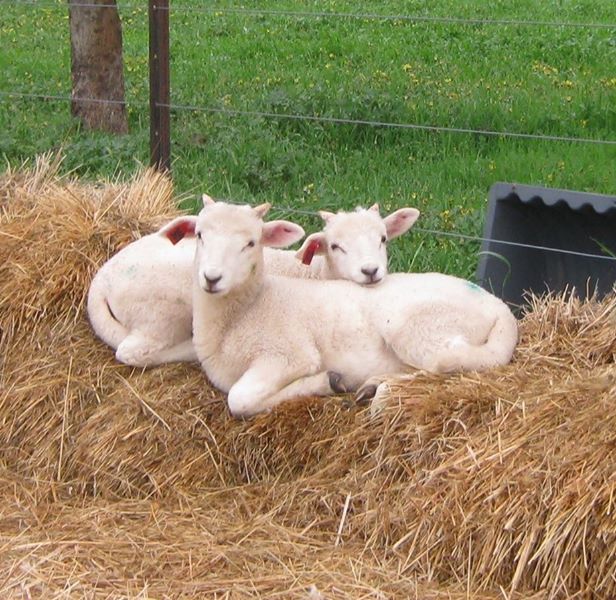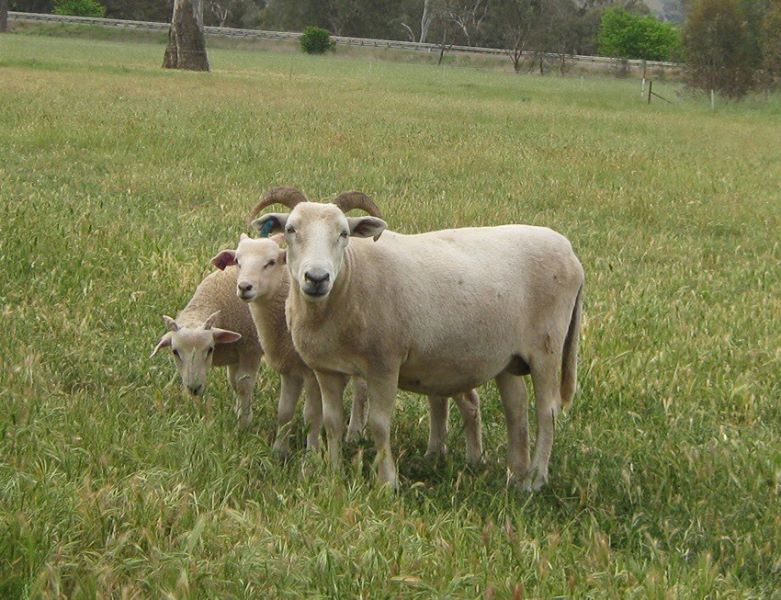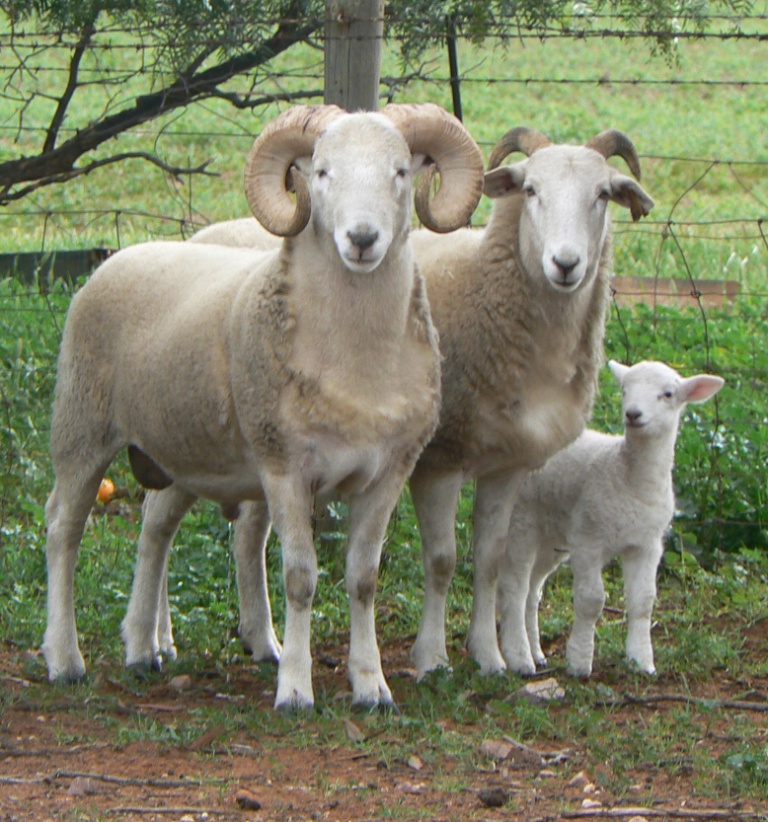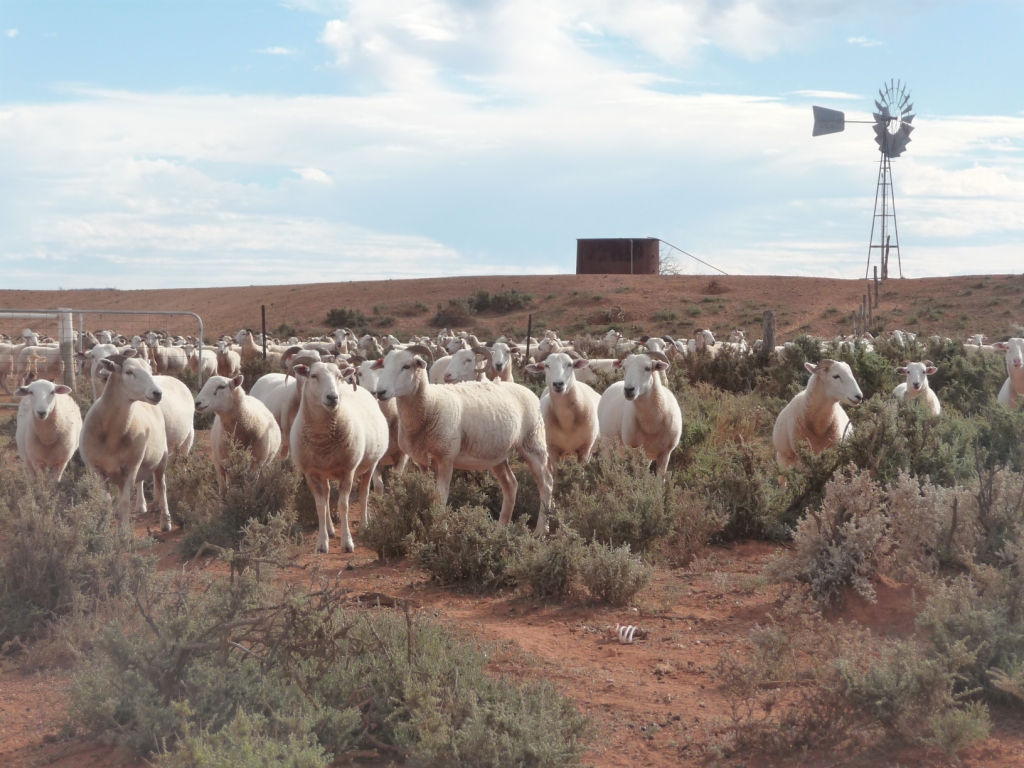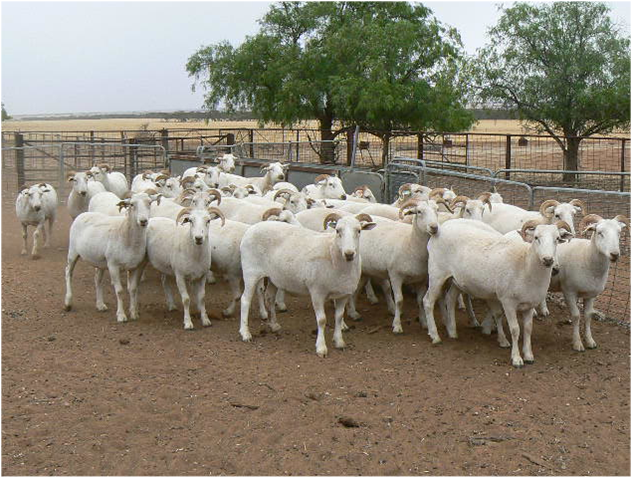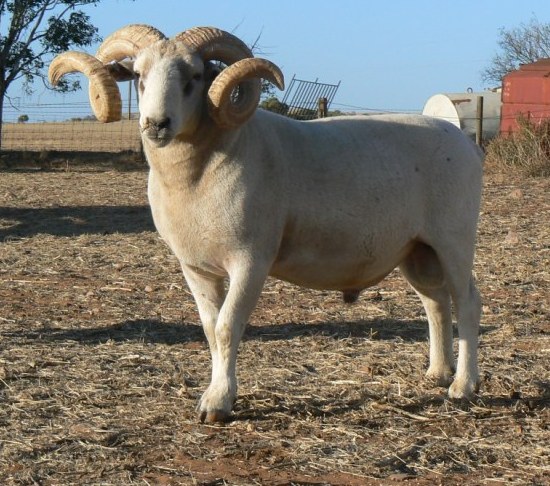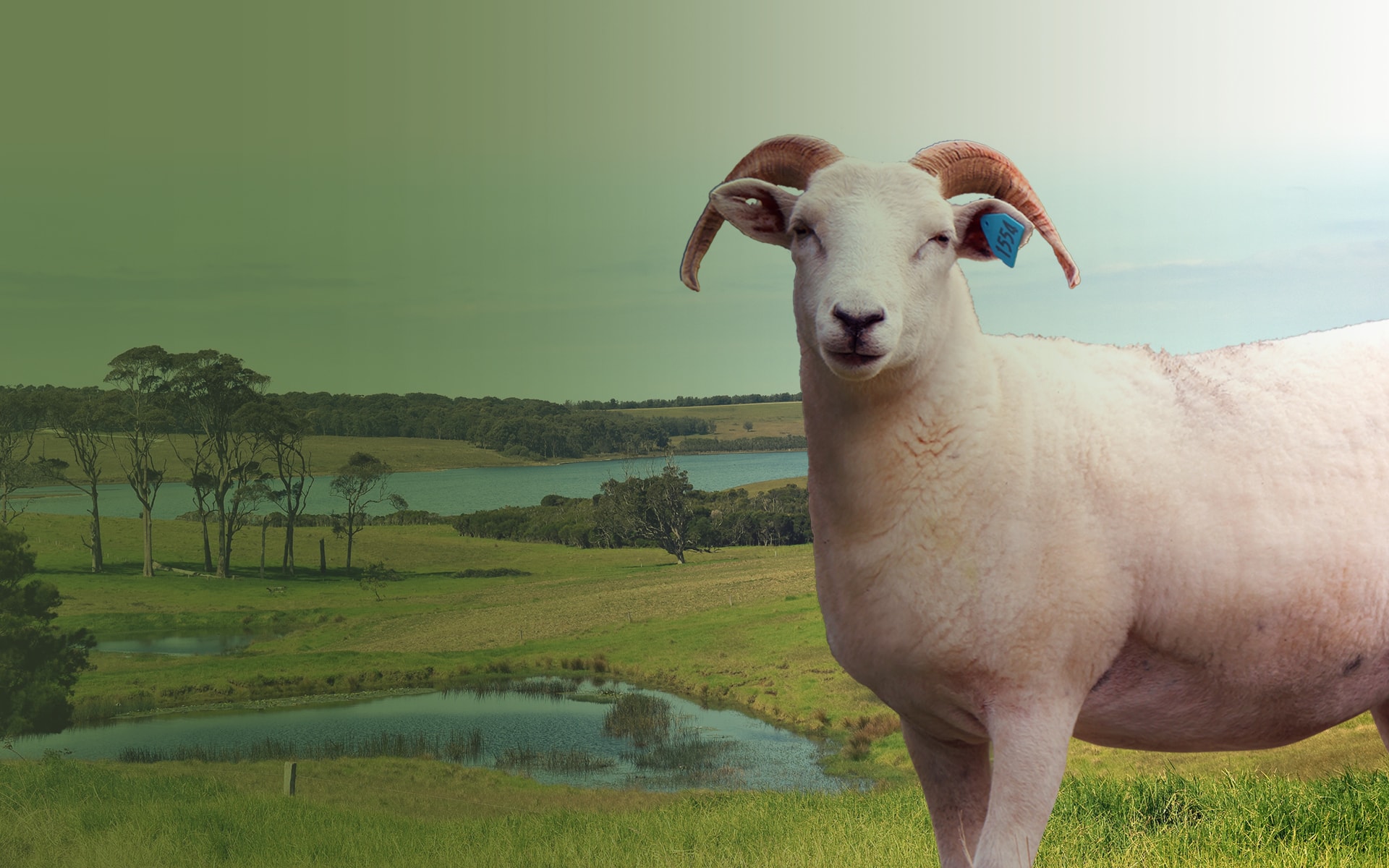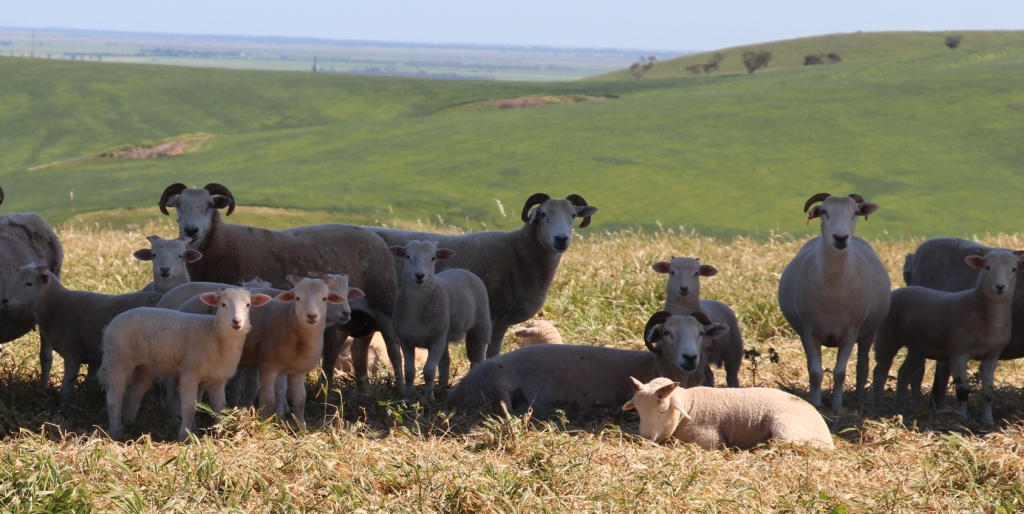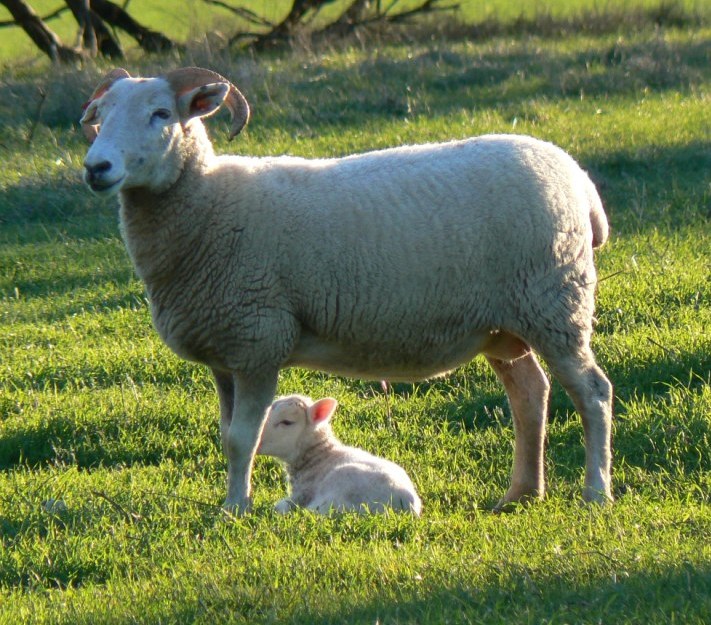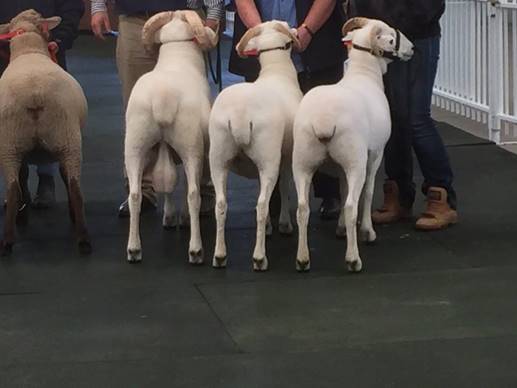Showing Wiltshire Horns
A beginner’s guide to showing sheep
If you are interested in showing sheep, start by visiting a show, local or further afield. Have a good look around the sheep pens and take note of what the exhibitors are doing, especially in the time leading up to the judging. Pick a good vantage point at the ring side and watch the classes being judged, observe the judge as he or she goes about the task, and how the exhibitors are handling their sheep.
After all the individual sheep breed classes have finished, later in the day for the one day shows, the judging of the Sheep Interbreed will commence; here all the individual breed champions go forward to compete for the interbreed Supreme Champion sheep of the show, possibly taking in another hour or two.
Preparation
Showing sheep starts at home with breeding, selection and preparation. Your sheep will need to be handled at the show so the preparation should also include some halter training so that you can successfully show your sheep off to their potential. It helps the judge and you if the sheep can walk well and also stand, then hopefully the exhibitor will not have to drag the sheep around the ring, even so the best trained sheep can have their bad days! Google and YouTube have some tips on how best to halter train a sheep.
The Paperwork
There is paperwork associated with showing, most shows these days publish and make available a schedule that lists the different classes that you may enter, the show rules and entry fees. Normally there will be a closing date typically two to six weeks before show day, you must return your entries and fees in time or your entry will be rejected. Therefore it is very important to get yourself on the list to receive a schedule for the shows you have selected, it is normal to ring the show office or the show secretary and they will be very willing to help you.
You will need to consider which classes you would like to enter, typically there will be a class for the senior rams being over two years old, yearling rams and ewes, ram and ewe lambs born after 1st January, occasionally you will find classes for abreeding ewe – two years or over having raised a lamb that year. There will also be classes for a group of three sheep, typically one ram and two ewes.
Health statements must be filled in and a public liability waiver form completed. Some states will need a national vendor declaration to also be submitted.
The Essentials
You will need showing essentials to take with you on the day, including buckets for water and feed, feed, your nice uniform (long sleeve shirts are required for the showing ring), halters and your business cards or stud brochures (do check as some shows do not allow this). Some breeders recommend using red cordial as the water supplied can be tap water with chlorine and your sheep may not like the smell or taste and the red cordial masks this.
Don’t forget your grooming kits too! You will need curry combs, lead ropes, clothes for washing faces and knees, soap, a rake, chairs and some food and drink for you. Most of all you will need a positive attitude to promote the breed and answer lots of questions!
Show Day
When you arrive at the venue you will need to book your stock in, once you locate your pens which will normally be labelled with your name, unload the sheep. Loading and unloading needs to be done swiftly as others will be waiting in line.
Provide water and feed for the sheep. Once the sheep are secure in the pens and you have moved your vehicle to the designated parking area you can display any promotional material that you have, although this is not a necessity for your first showing ventures.
Showing Sheep
Showing sheep is about subjective assessment against a standard; your sheep will be assessed by the judge against the breed standard and the judge’s opinion as to the finer breed points. Before we consider the sheep we do need to say a few words about the exhibitor who in our opinion needs to be sensibly and smartly dressed.
You will need a clean white coat, and do keep it buttoned up. You will also need clean stout shoes or boots possibly wellington boots in wet weather, smart trousers or skirt, shirt and tie is welcome and remember sun hats in hot weather or wet weather coats and hats should you be unfortunate to exhibit in the rain.
Normally the order of judging will start with the ram class, if there are separate classes for senior ram (over two years) and yearling ram, they will usually start judging with the senior ram. The yearling ram class will follow and then the ram lambs. After the ram classes the ewes are judged, the breeding ewe will normally start if there is a class, followed by yearling ewes and then the ewe lambs. Very occasionally the older ewe and yearling class may be mixed and the schedule will say, ewe of any age but must be one year or older, not a favourite class of ours as we prefer the older ewes in a class of their own.
Once the individual classes are over, the judging normally progresses with the group of three, here the judge will be looking for the three most correct animals that match together well and in his opinion make a deserving group.
Following the completion of the above mentioned classes, the breed champion and reserve breed champion will then be selected. The first placed animals from each class, excluding the group of three, will be invited back into the ring and the judge will carefully select the animal that in his or her opinion is the most correct and the best example of the breed; this could be any of the first placed prize winners but typically a ram, sometimes the ewe if she outshines the ram and on rarer occasions a lamb! Once the judge has selected the breed champion the second placed animal from that class will be invited back into the ring, the judge will then also consider this animal when selecting the reserve breed champion.
There will be a steward to help organise and keep you informed about the judging, the steward should come and let you know the judge has arrived and an idea of how much time you have left before the first class is called- frantic last minute, check the sheep looks its best, is the halter on correct!. If you are not sure about anything ask the steward for assistance and help.
Judging
Typically the judge will ask the exhibitors to walk the sheep around the ring whilst they stand in one corner to watch each individual animal walk towards and then away. The judge will be assessing how well the animal moves checking for any obvious problems with the legs and feet – this is where all of that halter training pays off!
Remember to keep your animal between you and the judge, the judge wants a good look at the sheep; it is surprising to see how often experienced exhibitors place themselves between the sheep and the judge especially when turning. Do not walk too fast and never drag your sheep along by its halter, if your sheep is slow to lead or stubborn, drop behind another sheep so it can follow and gently squeeze its tail to make it move along. If you are not confident how well your animal will lead always try to follow on behind one of the other exhibitors.
The judge will ask each exhibitor to line their animal up, if you are new keep an eye on the other exhibitors and take their lead – you don’t want to line your animal up with its head facing one way when all of the others are facing in the opposite direction! With the animals in line the judge will normally take a couple of minutes to walk up and down, both from behind and in front, the judge will be closely observing the sheep considering the merits of one with another, so it is important to make sure you have them standing good and square with a leg set in each corner.
You want to avoid the feet being tucked in under the sheep as it will then look hunched, as if the animal has ‘wind’ or the legs spread wide, resembling the unforgettable ‘Bambi on ice’. The aim is to have your sheep standing square with its head held up, looking forward and alert.
Keep your eye on the judge so you know where he / she is, because that is where the judge is looking at you from, for us this is the golden rule; avoid letting yourself get between the judge’s eye and your sheep, move to the side if you are in the way, so the judge always has a clear view.
The judge will then start the detailed examination of each animal, beginning from one end of the line and systematically working his / her way through. They will be assessing:
- Teeth to begin with, often by using a thumb in the sheep’s mouth and gentling rubbing the teeth and checking they are correct, not forward or back to the pad. They will also be checking the teeth in relation to the animal’s age. Some judges will part the lips of the sheep again to visually check the teeth and correctness of the mouth. Some may ask you to part the sheep’s lips and display the teeth.
- Eyes to check that they are healthy, clear and bright with no redness or discharge; this could indicate a contagious condition.
- A firm, straight back as well as overall condition by feeling and handling the animals back, loins, back end and tail.
- Testicles in the males to ensure they are both fully dropped and of even size.
- Teats in females, for a breeding ewe the teats and also the udder to check for any sign of hardness or lumps.
- Feet in particular, so during your preparation at home make sure they are trimmed correctly and also check the animal is not down on its pasterns. The legs should be straight, certainly below the knee, but we prefer to see a good straight leg, with some width between them.
Managing your animal during its examination
The judge will handle the sheep firmly so be sure to keep a reasonable hold of the animal, as it is not unusual to see lambs in particular jump into the air. For this reason it is also important that you keep a reasonable distance from your fellow exhibitors as it can be annoying for their sheep to be upset by the lively animal next to it.
The judge may ask you to walk your animal again from your position in the line and occasionally also ask two or more exhibitors to do this together.
Remember you have your part to play by ensuring that, as the judge approaches, you have a firm but steady grip of the halter and sheep. Some judges will be quite chatty and it is in order to respond, but keep it appropriate and remember it is the animal that counts and not you. Avoid entering into conversations with the exhibitors next to you or spectators outside the show ring; keep your attention on the judge ensuring your animal is presented well.
When the judge has completed his individual assessments he / she will begin to pull the animals forward in order of merit and usually continue to place them all the way down the line, however some will only place the animals to the number of rosettes awarded for the class. Different judges will have different preferences when it comes to the finer points of the breed and that for us is what makes showing interesting.
Once the judge has finalised the line-up rosettes will be handed out - take time to congratulate the winners of each class.
Summing up
The judge’s task is a difficult one. Remember it’s the judge’s own subjective opinion, particularly when it comes to the finer breed points, so don’t be too disappointed if you don’t get a red rosette. It is quite in order to discuss the judging afterwards back in the pens, but not in the show ring. It is customary for the judge to visit the exhibitors after judging and that is the best place to have an informal chat about the day. At this point it is in order to enquire of the judge how he felt your sheep competed in the class.
Remember that the show ring is the shop window for the breed and your flock and that the show ring and sheep pens are an invaluable place of learning, companionship and enjoyment.
Article adapted from https://ssgf.uk/exhibitors/beginners-guide-to-showing-sheep/





